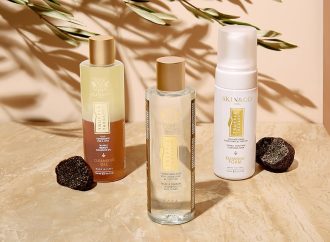Introduction In 2025, sex dolls are a popular way to find companionship and intimacy. Advances in materials have made them look very real. The two main materials used are TPE and silicone, each with its own special qualities. This article compares TPE and silicone sex dolls by looking at how they feel, how long they
Introduction
In 2025, sex dolls are a popular way to find companionship and intimacy. Advances in materials have made them look very real. The two main materials used are TPE and silicone, each with its own special qualities. This article compares TPE and silicone sex dolls by looking at how they feel, how long they last, how much they cost, how you can customize them, and how safe they are. By the end, you’ll have a clear idea of which type TPE or silicone might be best for you.
What Are TPE and Silicone?
Before we compare TPE and silicone love dolls, let’s look at what each material is:
- TPE is made by mixing rubber and plastic. It feels soft and stretchyal most like real skin. Because it’s affordable and realistic to touch, many tactile products use TPE.
- Silicone is a man-made material that lasts a long time and stands up to heat. It’s smooth and doesn’t trap germs, so it’s used in medical tools and top-quality dolls.
Both TPE and silicone make lifelike dolls, but their differences shape how they feel, last, and stay clean. Now, let’s see how TPE and silicone dolls stack up on key points.
Material Properties
The physical characteristics of TPE and silicone set the foundation for their performance in sex dolls.
| Aspect | TPE | Silicone |
| Texture | Soft, squishy, and elastic, resembling human skin | Smooth, firm, and silky, closely mimicking skin texture |
| Porosity | Slightly porous, can absorb liquids | Non-porous, resists liquid absorption |
| Heat Retention | Excellent, retains body heat for a lifelike feel | Good, but less effective than TPE |
| Weight | Lighter, easier to maneuver | Heavier, denser material |
| Elasticity | Highly elastic, allows natural movement and “jiggle” | Less elastic, more rigid but can be adjusted |
Key Insight: TPE’s softness and heat retention make it feel more pliable, while silicone’s smooth, non-porous surface offers a premium, skin-like texture. For those prioritizing ease of handling, TPE’s lighter weight is a plus.
Durability and Longevity
Durability is a critical consideration, as it determines how long your investment will last.
1. TPE
- Pros: Durable for regular use, with high elasticity that allows stretching without immediate damage.
- Cons: Sensitive to heat, which can cause deformation. Its porous nature makes it prone to stains and odors if not maintained properly.
- Lifespan: Typically 1-2 years with consistent use and proper care, per sources like Hongju Silicone.
2. Silicone
- Pros: Highly resistant to heat, stains, and odors. Its non-porous nature ensures it maintains its condition over time.
- Cons: Firmer texture may lead to minor cracking if mishandled, though this is rare.
- Lifespan: Often lasts 3-5 years or more with proper care, as noted by Annie’s Dollhouse.
Key Insight: Silicone outperforms TPE in longevity and resistance to environmental factors. However, TPE’s durability is sufficient for most users if maintained diligently.
Feel and Realism
Realism is a top priority for many, as it enhances the intimate experience.
1. TPE:
- Feel: Soft, elastic, and squishy, offering a comfortable, skin-like texture. Users often describe it as more “huggable.”
- Realism: Highly realistic when warmed, with excellent heat retention and a natural “jiggle” that mimics human movement.
- User Feedback: Many appreciate TPE’s warmth and flexibility, as highlighted in Fine Love Dolls.
2. Silicone:
- Feel: Smooth and firm, with a silky texture that closely resembles human skin. It’s less pliable than TPE.
- Realism: Exceptional in visual realism, especially with detailing like implanted hair or tattoos. Its firmness can feel less “lifelike” to some.
- User Feedback: Praised for its smooth texture and durability, per Crazy Peas.
Key Insight: TPE excels in tactile realism due to its softness, while silicone shines in visual realism. Your preference for touch versus appearance will guide your choice.
Cost
Cost is a significant factor for most buyers, and there’s a clear divide between TPE and silicone.
| Material | Price Range | Reason |
| TPE | Starts at a few hundred dollars | Cheaper to produce, simpler manufacturing process |
| Silicone | Often thousands of dollars | Premium material, complex production, higher durability |
Key Insight: TPE is the budget-friendly option, making it accessible to a wider audience. Silicone, while more expensive, justifies its cost with longevity and quality, as noted in Fine Love Dolls.
Customization
Customization allows users to personalize their dolls, from body type to facial features.
1. TPE:
- Options: Highly moldable, enabling intricate details, seamless joints, and diverse designs. Brands like SE Doll and Piper Doll specialize in TPE customization.
- Limitations: Paint and tattoos may not adhere as well due to TPE’s lower adhesion properties.
2. Silicone:
- Options: Supports premium features like implanted hair, realistic skin textures, and permanent tattoos. Brands like Zelex Doll excel in silicone customization.
- Limitations: Customization is costlier and less flexible due to silicone’s rigidity.
- Key Insight: TPE offers more affordable and varied customization, while silicone provides high-end, detailed options for those willing to invest.
Safety and Hygiene
Hygiene is paramount for intimate products like sex dolls.
1. TPE:
- Hygiene: Porous, so it can harbor bacteria if not cleaned thoroughly. Many TPE dolls feature removable vaginas for easier cleaning, as noted by Annie’s Dollhouse.
- Safety: Generally hypoallergenic, but less so than silicone. Suitable for most users with proper maintenance.
2. Silicone:
- Hygiene: Non-porous, easy to clean with soap and water, and can be sterilized by boiling. Ideal for hygiene-conscious users.
- Safety: Highly hypoallergenic and biocompatible, making it safe for sensitive skin.
- Key Insight: Silicone is superior in hygiene and safety, while TPE requires more effort but is safe with diligent care.
Market Trends and Popularity
The TPE vs silicone sex toy materials landscape reflects evolving consumer preferences.
- TPE: Has surged in popularity since 2018 due to its affordability and realistic feel, as per Celesdolls. It dominates the budget-friendly segment.
- Silicone: Remains a premium choice, favored by those seeking durability and hygiene. Brands like Real Lady Silicone Doll cater to this market.
Key Insight: TPE’s accessibility drives its market dominance, while silicone appeals to niche, quality-focused buyers.
User Experiences
User feedback provides valuable insights into the difference between TPE and silicone love dolls.
- TPE: Users love its softness and warmth, ideal for cuddling and intimacy. Some note it can feel sticky without baby powder or proper cleaning.
- Silicone: Praised for its longevity and easy maintenance, though some find it too firm for prolonged use.
- Key Insight: TPE is favored for comfort, while silicone is valued for practicality. User preferences vary widely, as seen in forums referenced by Fine Love Dolls.
For those seeking the ultimate in realism, realistic woman sex dolls crafted from silicone, like those from Real Lady Silicone Doll, offer unparalleled visual and tactile authenticity. These dolls are designed to mimic the appearance and feel of real women, showcasing silicone’s strengths in detailing and durability.
Which is Better: TPE or Silicone Sex Dolls?
The Sex Doll Material Comparison: TPE vs Silicone reveals no universal “best” material. Instead, the choice depends on your priorities:
1. Choose TPE if:
- You’re budget-conscious.
- You prefer a soft, warm, and pliable feel.
- You’re comfortable with regular maintenance.
2. Choose Silicone if:
- You prioritize durability and hygiene.
- You want a premium, hypoallergenic product.
- You’re willing to invest in a long-lasting doll.
For example, if you’re drawn to sex dolls for their affordability and tactile realism, TPE is likely your best bet. Conversely, if you value a low-maintenance, high-quality experience, silicone is the way to go.
Conclusion
The TPE vs. silicone doll comparison shows what’s good and not so good about each material. TPE is cheaper, soft, and feels real great if you want an affordable, close-to-life experience. Silicone lasts longer, stays cleaner, and looks top quality perfect if you want something that holds up over time.
Knowing these differences helps you pick the right doll for your needs, budget, and lifestyle. Whether you choose the wallet-friendly feel of TPE or the premium strength of silicone, both can give you a good, lifelike experience. The best choice comes down to what matters most to you.
visit Truegazette.com





















